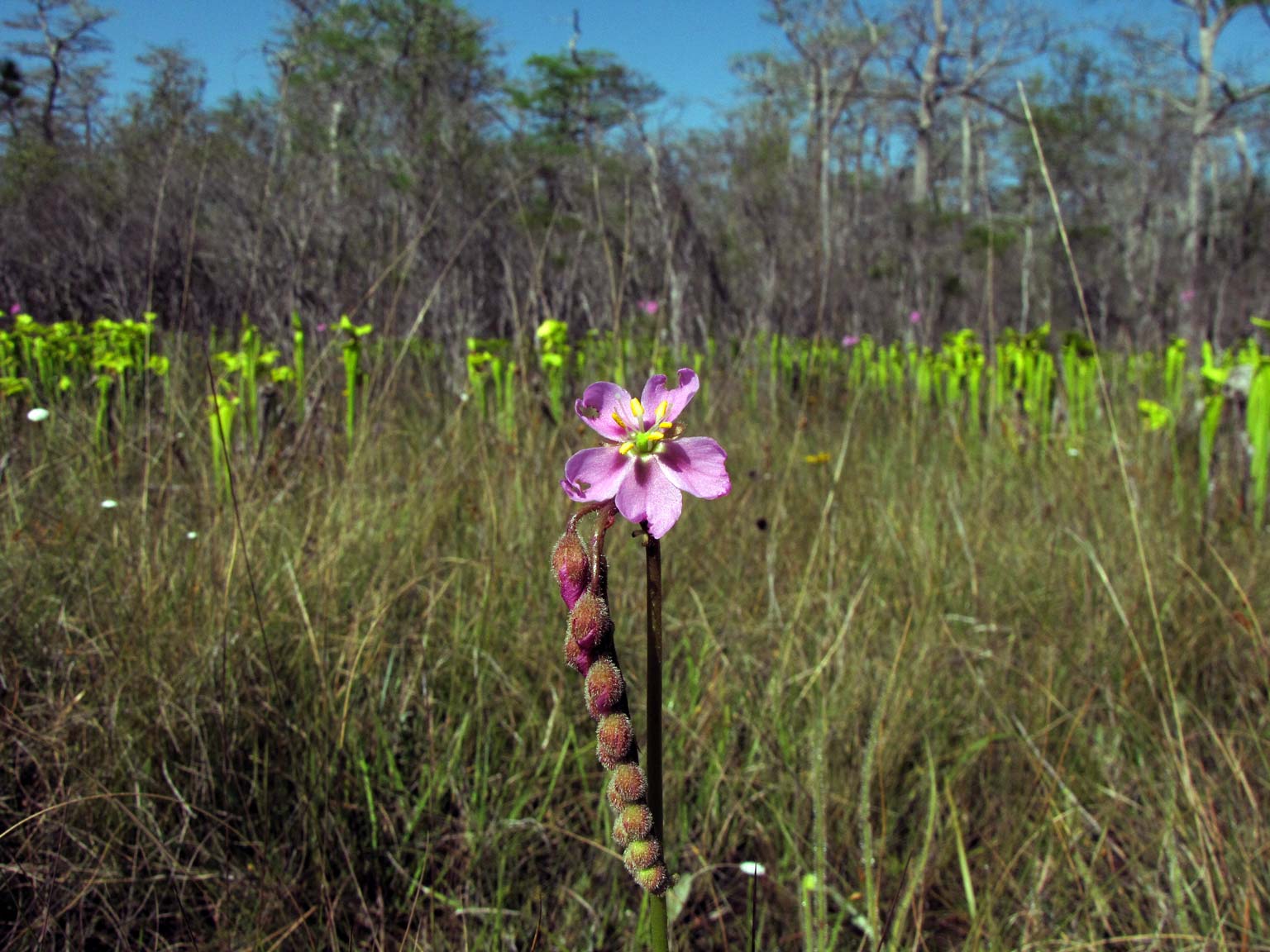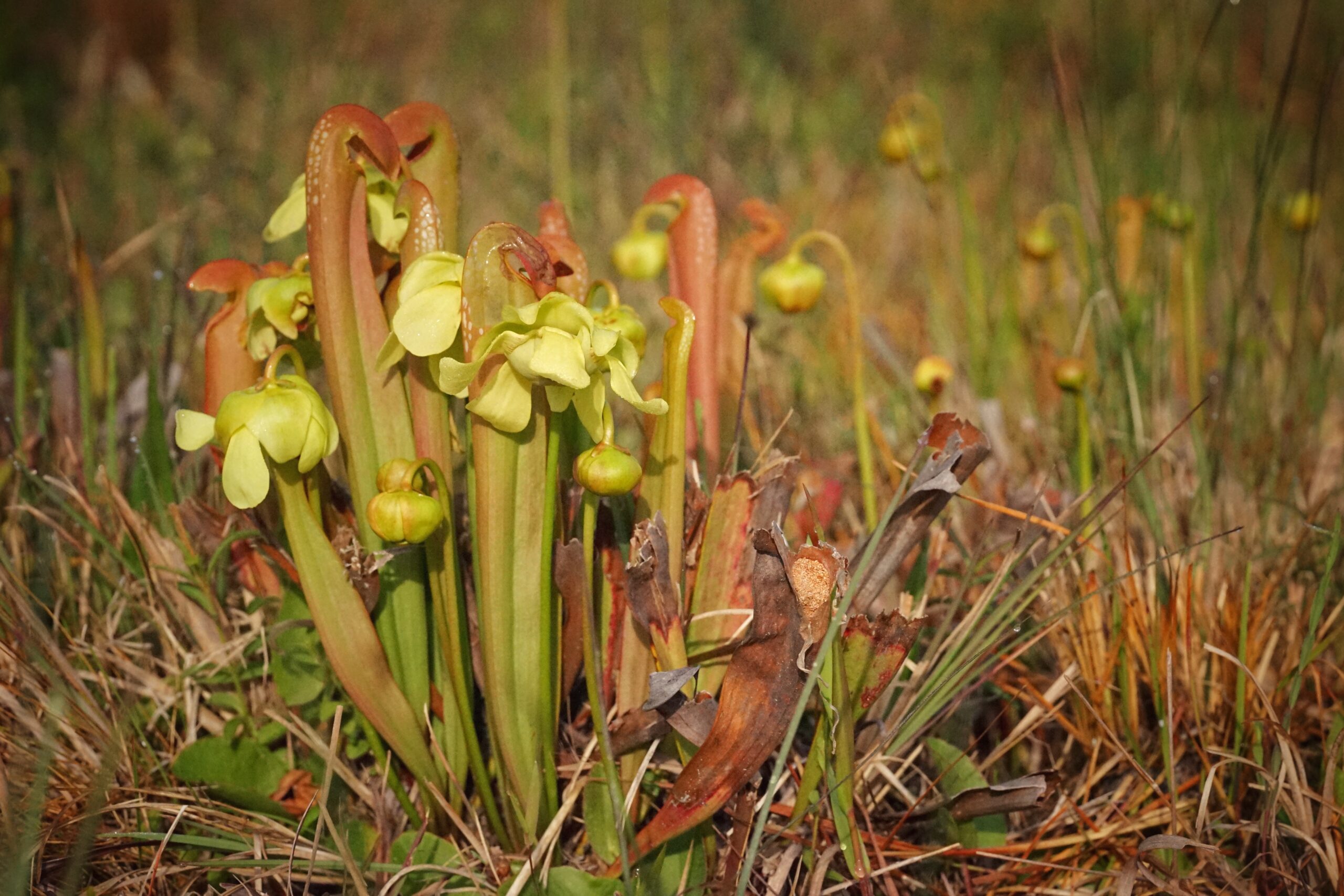If you’re fascinated by unique plants that not only look amazing but also have an intriguing way of feeding themselves, pitcher plants should be at the top of your list. Especially if you live in Florida, where these carnivorous beauties thrive naturally.
But with so many types of pitcher plants out there, how do you know which ones will flourish in your Florida garden? This guide will help you discover the best pitcher plants suited for Florida’s climate and soil conditions. By the end, you’ll be ready to add these captivating and low-maintenance plants to your collection, impressing friends and creating a garden unlike any other.
Ready to dive in? Let’s explore the top pitcher plants perfect for your Florida home.

Credit: www.flawildflowers.org
Florida Native Pitcher Plants
Florida native pitcher plants are a unique group of carnivorous plants. They capture insects to gain nutrients in poor soil. These plants add beauty and intrigue to Florida’s wetlands. Many species belong to the genus Sarracenia. They thrive in the Sunshine State’s warm climate and wet habitats.
Sarracenia Species In Florida
Florida hosts several native Sarracenia species. The most common include Sarracenia flava, Sarracenia leucophylla, and Sarracenia minor. Each species has distinct pitcher shapes and colors. These differences help attract various insects. Some have tall yellow tubes, while others show red or white patterns. These plants are true carnivores, relying on insects for nutrients.
Habitats And Growing Conditions
Native pitcher plants prefer wet, acidic soils. They grow well in bogs, savannas, and pine flatwoods. These environments provide the moisture and sunlight they need. Poor soil quality limits competition from other plants. Many Florida pitcher plants grow in open, sunny areas. They need consistent moisture but cannot survive in standing water.
Seasonal Growth Patterns
Pitcher plants in Florida follow clear seasonal cycles. In spring, they start producing new pitchers and leaves. Summer brings full growth and peak insect trapping. In fall, growth slows and pitchers may fade in color. During winter, many species enter dormancy to survive cooler temperatures. This cycle repeats yearly, ensuring healthy plants and strong growth.

Credit: floridahikes.com
Top Pitcher Plant Picks For Florida
Florida’s warm climate and wet habitats provide an ideal home for many pitcher plants. These fascinating carnivorous plants attract insects into their tubular leaves. Their bright colors and unique shapes make them a favorite among plant lovers. Here are some top pitcher plant picks that thrive in Florida’s environment.
Sarracenia Purpurea
Sarracenia purpurea, also known as the purple pitcher plant, grows well in Florida’s moist soils. It features wide, purple-red pitchers that collect rainwater. This species is hardy and adapts easily to different conditions. It attracts a variety of insects, making it a lively addition to any garden.
Sarracenia Leucophylla
Sarracenia leucophylla stands out with its striking white and red veined pitchers. This plant prefers sunny, boggy areas found in Florida. It grows tall and produces beautiful flowers in spring. The white coloration helps it lure prey even in low light.
Sarracenia Flava
Sarracenia flava is known for its bright yellow-green pitchers. It thrives in Florida’s wet pine savannas and open swamps. This species can grow quite tall, sometimes reaching three feet. Its large hooded lids prevent rainwater from diluting the digestive enzymes inside.
Catesby’s Pitcher Plant
Catesby’s pitcher plant, or Sarracenia minor, has slender, curved pitchers. It grows in acidic, wet soils common in Florida’s coastal plains. The plant blooms with red flowers that attract pollinators. Its pitchers trap insects efficiently, providing essential nutrients.
Choosing Heat-tolerant Carnivorous Plants
Choosing heat-tolerant carnivorous plants is key for success in Florida’s hot climate. These plants thrive in warmth and humidity. They have special traits to survive intense sun and moisture. Knowing these traits helps you pick the best pitcher plants for your garden. This section covers how these plants adapt and which types suit hot, humid areas.
Adaptations To Florida’s Climate
Pitcher plants in Florida have strong adaptations. Their pitchers hold water to trap insects for nutrients. Thick, waxy leaves reduce water loss in heat. Some have hairy surfaces to slow evaporation. Many grow in acidic, nutrient-poor soils where other plants struggle. These adaptations help them thrive in Florida’s heat and humidity. They also tolerate sudden heavy rains common in the region.
Best Varieties For Hot And Humid Areas
Sarracenia flava is a top choice for Florida gardens. It handles high heat well and produces bright yellow pitchers. Sarracenia leucophylla also thrives in hot, humid spots. Its striking white and red pitchers attract many insects. Nepenthes species can survive in shaded, warm areas. They prefer indirect sunlight but still do well in Florida’s climate. Choosing these varieties ensures your pitcher plants stay healthy and vibrant year-round.

Credit: www.flawildflowers.org
Soil And Water Requirements
Pitcher plants thrive with specific soil and water conditions. These conditions mimic their natural Florida habitats. Understanding these needs helps your plants grow strong and healthy.
Choosing the right soil and managing water carefully ensures the plants capture nutrients well. Pitcher plants prefer moist, acidic environments. They do not grow well in regular garden soil or hard water. Proper care supports their unique way of feeding and growing.
Ideal Soil Types
Pitcher plants need soil that drains well but stays moist. Use a mix of sphagnum peat moss and sand or perlite. Avoid regular garden soil or fertilizer-rich soil. These can harm the plants by adding too many nutrients. The soil should be acidic with a pH around 4 to 5. This acidity helps them absorb nutrients properly.
Watering Tips For Pitcher Plants
Use only pure water sources like rainwater or distilled water. Tap water often contains minerals that damage pitcher plants. Keep the soil constantly damp but not flooded. Standing water in the pot’s tray is fine, but avoid letting the soil dry out. Water more during hot months and reduce slightly in cooler weather.
Maintaining Moisture And Acidity
Maintain high humidity around the plants to keep moisture levels steady. Use a humidity tray or mist the plants lightly. Check soil moisture often to prevent drying. Test soil acidity regularly to keep pH balanced. Adjust soil or watering if pH rises above 5. Proper moisture and acidity support healthy growth and vibrant pitchers.
Planting And Care Tips
Pitcher plants thrive in Florida’s warm and humid climate. Proper planting and care help these unique plants grow strong. Understanding their needs ensures healthy pitchers and vibrant foliage. Follow simple tips to create the best environment for your pitcher plants.
Light And Location Needs
Pitcher plants require plenty of sunlight. Place them in a spot with at least six hours of direct sun. Morning sunlight is gentler and better for young plants. Avoid shaded or dark areas to keep pitchers colorful and healthy. Choose locations with good air circulation to prevent mold. Wet, acidic soil mimics their natural habitat. Use peat moss or sphagnum as soil base for best results.
Fertilizing And Feeding
Pitcher plants get most nutrients from trapped insects. Do not over-fertilize; it can harm roots. Use a diluted, low-nitrogen fertilizer once a month during the growing season. Feeding live or dried insects occasionally supports plant growth. Avoid feeding processed food or meat. Water with rainwater or distilled water to avoid minerals that damage roots. Healthy feeding habits boost pitcher size and color.
Pest And Disease Management
Watch for aphids, spider mites, and scale insects. These pests weaken pitcher plants by sucking sap. Use insecticidal soap or neem oil for safe pest control. Remove damaged or dead leaves to reduce disease risk. Fungal infections may appear in humid conditions; improve airflow to prevent them. Inspect plants regularly for signs of trouble. Early action keeps pitcher plants healthy and thriving.
Where To Buy Pitcher Plants In Florida
Finding the right place to buy pitcher plants in Florida is key to growing healthy, vibrant specimens. Florida’s climate supports many native pitcher plant species, so buying locally often means getting plants suited for the environment. Knowing where to shop helps beginners and enthusiasts alike start their carnivorous plant journey with confidence.
Local Nurseries And Growers
Local nurseries in Florida often carry native pitcher plants. These nurseries understand the state’s climate and soil needs. Buying from local growers ensures the plants are already adapted to Florida’s conditions. Visit nurseries specializing in native plants or carnivorous plants for the best selection. Staff can provide advice on care and planting tips. Supporting local businesses also helps conserve native plant species.
Online Retailers
Online retailers offer a wide variety of pitcher plants from Florida and beyond. Many specialized websites ship healthy plants directly to your door. Look for sellers with good reviews and clear photos of their plants. Some websites provide detailed care instructions, making it easier for beginners. Buying online broadens your options, especially for rare or unusual pitcher plant varieties. Ensure the retailer ships to Florida and packages plants securely.
Choosing Healthy Plants
Healthy pitcher plants have bright colors and firm leaves. Avoid plants with brown spots or wilting leaves. Check for pests like aphids or mites before buying. The plant’s pitcher tubes should be intact and not dried out. Choose plants with strong root systems if visible. Healthy plants adapt better and grow faster in your garden. Ask sellers about the plant’s care history and any treatments applied.
Combining Pitcher Plants With Other Florals
Combining pitcher plants with other florals creates a rich, diverse garden space. Their unique shapes and colors stand out among common plants. Pairing them thoughtfully enhances growth and visual appeal. Selecting plants that thrive in Florida’s warm climate ensures success. Using complementary plants helps maintain soil moisture and acidity levels. This approach brings balance and beauty to your garden.
Complementary Heat-tolerant Plants
Choose heat-tolerant plants that survive Florida’s hot weather. Some great companions include hibiscus, crotons, and lantanas. These plants handle intense sun without drying out the soil. Their vibrant flowers add color contrast to pitcher plants. Palms and ferns also work well in shaded areas. They create a natural, tropical look around carnivorous plants. Make sure all plants share similar water needs to avoid stress.
Creating A Carnivorous Garden Display
Arrange pitcher plants with other carnivorous species for a striking display. Sundews and butterworts complement their unusual forms. Grouping these plants highlights their insect-catching abilities. Use moss or sphagnum around the base for moisture retention. Adding natural materials like bark or stones enhances the wild feel. Keep the display moist and sunny for best results. This setup draws attention and educates visitors about unique plants.
Frequently Asked Questions
What Carnivorous Plants Grow In Florida?
Florida hosts four native carnivorous plants: pitcher plants, sundews, butterworts, and bladderworts. They thrive in moist, acidic soils like bogs and wet pinelands.
What Is The Hardiest Pitcher Plant?
The hardiest pitcher plant is Sarracenia purpurea. It tolerates cold climates and adds vibrant purple-red color to gardens.
Can You Grow A Pitcher Plant In Florida?
Yes, you can grow pitcher plants in Florida. They thrive in moist, acidic soils found in bogs and wetlands. Florida hosts many native pitcher plant species, especially in the panhandle and central regions. Provide plenty of sunlight and consistently wet conditions for best growth.
What Plants Can Survive In The Heat In Florida?
Heat-tolerant plants in Florida include lantana, hibiscus, pentas, salvia, sunflowers, crotons, bromeliads, coreopsis, coneflowers, and succulents. These plants thrive in high temperatures and humidity with minimal care.
Conclusion
Pitcher plants add unique beauty to Florida gardens. They thrive in moist, acidic soils found in the state. Choosing the right species ensures healthy growth and vibrant colors. These plants also help control insects naturally. Growing pitcher plants is rewarding and fun for beginners.
Start with native types for best results in Florida. Enjoy watching these fascinating plants catch their own food. They bring life and interest to any outdoor space. Explore local nurseries or plant societies for expert advice. Your Florida garden can stand out with pitcher plants.

